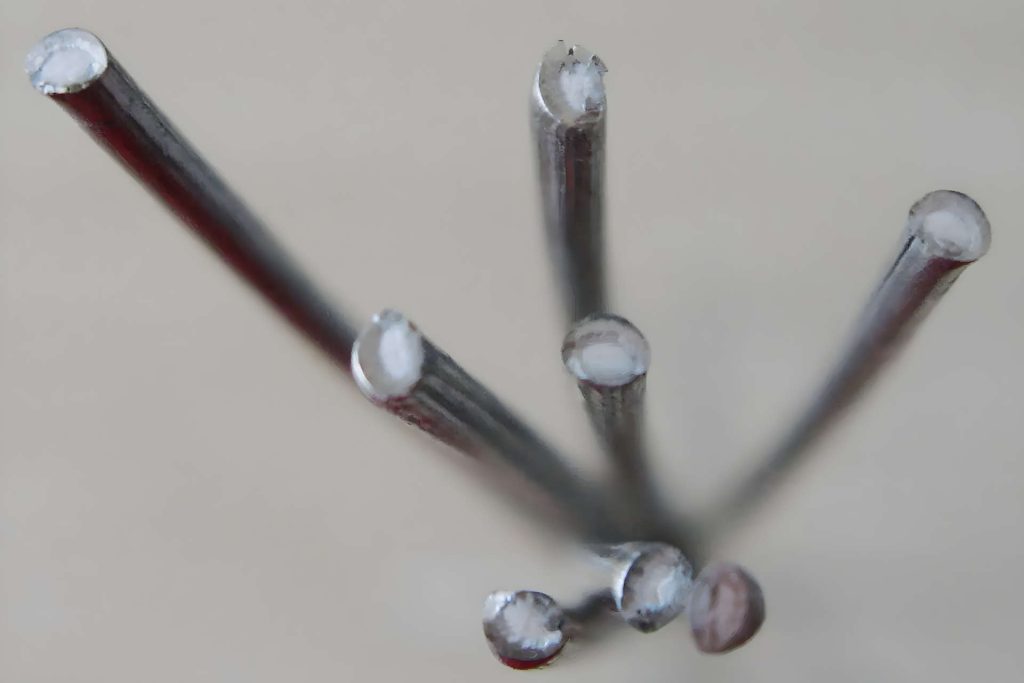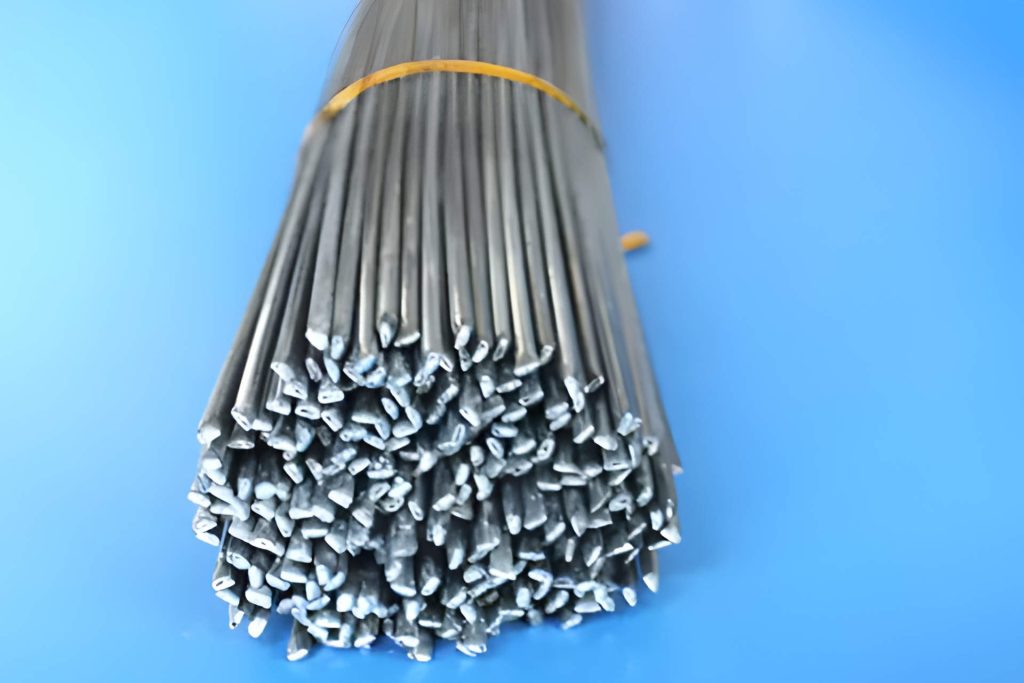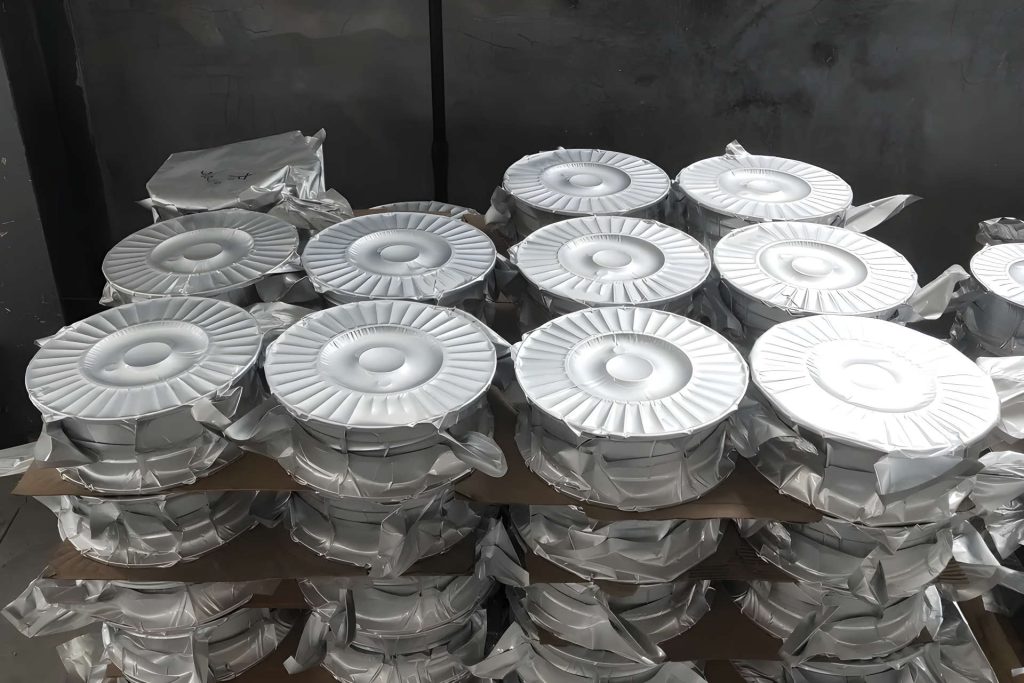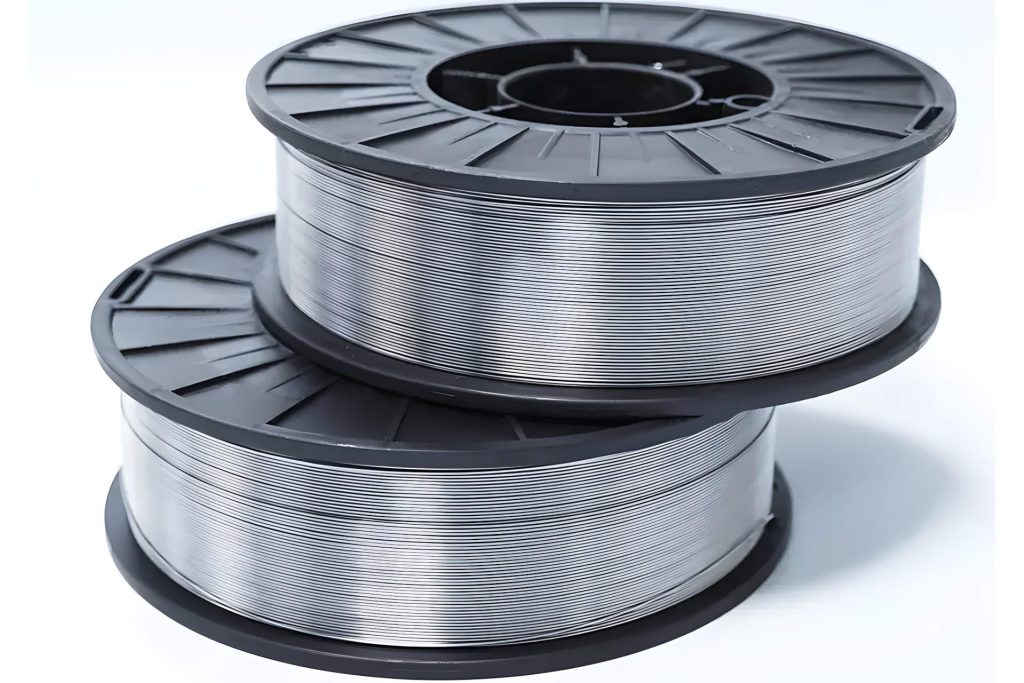The Ultimate Guide to Selecting the Best Flux Core Wire
americanindustrialsupl and its partners may earn a commission if you purchase a product through one of our links.
The selection of the most best flux core wire for welding projects is crucial, as it directly impacts the quality and durability of welds. When picking the most suitable flux core wire for a job various factors should impact your decision, including the materials being welded, the welding use case, wire diameter, flux type, shielding gas, tensile strength, wire feed speed, welding position, environmental conditions, welding machine compatibility, and cost considerations. By carefully evaluating these aspects, you can make an informed choice that aligns with your specific welding needs.
Flux Core Wire
What is Flux Core Wire

Flux core wire is a type of welding consumable that is widely used in various flux core welding (FCAW) applications. It consists of a metal wire with a hollow core that is filled with flux materials. When the heat of the welding arc melts the wire, the flux inside the wire also melts, creating a shielding gas and producing a slag that covers the weld bead. This process helps protect the molten metal from oxidation and other atmospheric contaminants, resulting in more robust and more reliable welds.
Importance of Selecting the Right Flux Core Wire
Selecting the right flux core wire is crucial to achieving high-quality welds. With a wide range of options available in the market, choosing the best flux core wire for your specific welding needs can significantly impact the performance and durability of your welds. Properly selecting flux core wire ensures optimal penetration, minimal spatter, and excellent arc stability, leading to strong and aesthetically pleasing welds.
Through grasping the variations of different types of flux core wires and considering factors such as the materials being welded, welding use case, diameter of the wire, flux type, and the need for shielding gas, you can make an informed decision and select the best flux core wire that suits your requirements. This guide will provide you with comprehensive information to assist you in selecting the ideal flux core wire for your welding projects.
Types of Flux Core

There are two main types of flux core wire that you are most likely to use in most welding applications, these are self-shielding wires and gas-shielded wires.
Self-Shielding Wires
Self-shielding flux core wires, also known as gasless flux core wires, are designed to create their own shielding gas when exposed to the welding arc. These wires are particularly useful in outdoor welding applications where wind or drafts can interfere with the effectiveness of an external shielding gas. Self-shielding wires are commonly used by beginners and professionals alike due to their ease of use and versatility. They are typically compatible with standard flux-cored arc welding (FCAW) machines and do not require an additional shielding gas setup.
Gas-Shielded Wires
Gas-shielded flux core wires, as the name suggests, require an external shielding gas to protect the weld pool. These wires are commonly used in industrial applications where high-quality and precise welds are required. The shielding gas, typically a mixture of carbon dioxide (CO2) and argon (Ar), helps protect the molten metal from atmospheric contamination and provides better control over the welding process. Gas-shielded flux core wires are known for their higher deposition rates, cleaner welds, and improved weld appearance compared to self-shielding wires. They are often used in professional welding operations and require a compatible welding machine equipped with a shielding gas setup.
By gaining insight into the differences between self-shielding and gas-shielded flux core wires, you can choose the type that best suits your welding needs. Factors such as the desired weld quality, outdoor or indoor welding conditions, and the availability of shielding gas should be taken into consideration when selecting the appropriate type of flux core wire.
Factors to Consider When Selecting the Best Flux Core Wire
There are a number of factors that need to be considered when picking a flux core wire for a particular welding job.
Materials Being Welded
The materials being welded play a crucial role in determining the type of flux core wire you should select. Different flux core wires are designed to work with specific materials such as mild steel, stainless steel, or carbon steel.
It is important to consider the compatibility between the flux core wire and the base metal to ensure optimal weld quality and mechanical properties. You should also not that there is no flux core wire available to weld aluminum because the properties of the metal prevent it from achieving a strong weld with the flux core method
Certain flux core wires are specifically formulated for commonly welding thicker materials, such as flux core welding titanium, while others are better suited for thin gauge sheet metal. Assessing the material being welded will help you narrow down your options and choose a flux core wire that is specifically tailored to your project’s requirements.
Welding Use Case
Another important factor to consider is the specific use case or application for which you require the flux core wire. Different welding applications, such as vertical, horizontal, overhead, or flat position welding, may require different flux core wires with varying characteristics.
For example, if you are performing overhead welding, you may need a flux core wire that has low spatter and good slag removal properties to ensure smooth and clean welds. Additionally, the welding speed and deposition rate needed for your project will also influence your choice of flux core wire. By considering the specific welding use case, you can select a flux core wire that is optimized for the desired application and position.
Diameter of the Wire
The diameter of the flux core wire is an essential consideration when selecting the best option for your welding project. Flux core wires come in various diameters, commonly ranging from 0.030 inches to 0.045 inches. The selection of the wire diameter depends on several factors, including the thickness of the material being welded and the welding machine’s capabilities.
Thicker wires are typically used for welding thicker materials, as they allow for higher deposition rates and increased weld penetration. Conversely, thinner wires are more suitable for welding thin gauge metals, enabling better control and minimizing the risk of burn-through. It is crucial to match the wire diameter to the requirements of your project to ensure optimal welding performance and weld quality.
Diameter of The Wire in Relation to Your Welding Machine
Consider the thickness of the material and the recommended wire size specified by the welding machine manufacturer when choosing the diameter of the flux core wire, particularly in terms of the amperage required for specific flux core wires. Adhering to these guidelines will help you achieve the desired results and avoid potential welding issues such as poor penetration or excessive spatter.
Now we have looked at the main issues in selecting the best flux core wire, we will delve deeper into other crucial factors that should be considered when selecting the best flux core wire. By comprehensively analyzing these factors and making informed decisions, you can ensure that your welding projects are executed with precision and efficiency, resulting in high-quality welds.
Flux Core Wire
Flux Type
The type of flux used in flux core wire is an important consideration when selecting the best option for your welding needs. The type of flux used in the filler wire depends on the wire’s manufacturer, and two wires from different manufacturers could weld differently based on the flux used. Here are some of the various flux types used in flux-core wire:
- Rutile Flux: This type of flux is known for its ease of use and excellent slag release properties. It produces welds with smooth and clean appearances, making it suitable for applications where aesthetics are important. Rutile fluxes also offer good arc stability and are commonly used for welding mild steel.
- Basic Flux: Basic fluxes are designed to provide high-quality welds with strong mechanical properties. They are often used for welding structural and heavy-duty applications. Basic fluxes offer better resistance to contaminants, such as rust or mill scale, and can penetrate through these materials effectively.
- Cellulosic Flux: Cellulosic fluxes are commonly used for welding pipes and are known for their deep penetration capabilities. They generate a high amount of gas and produce welds with good penetration depth, making them suitable for applications that require robust, high-quality joints.
- Metal Core Flux: Metal core flux wires have a higher deposition rate than solid wire or flux-cored wire and can be used to weld thicker materials. They are designed to operate with a shielding gas
By understanding the characteristics and strengths of different flux types, you can select the flux core wire like E71T-1C that aligns with your welding requirements and the specific properties you need in your welds.
Shielding Gas
While self-shielding flux core wires generate their own shielding gas, gas-shielded flux core wires require an external shielding gas to protect the weld pool. The choice of shielding gas depends on the specific welding application and the desired outcomes.
- Carbon Dioxide (CO2): CO2 is a commonly used shielding gas for flux core welding. It is readily available and cost-effective. CO2 provides good penetration and can be used for welding a variety of materials. However, it may result in increased spatter and a slightly more turbulent arc compared to other shielding gases.
- Argon (Ar): Argon is often used in combination with CO2 to create a shielding gas mixture. This mixture, known as C25 (75% Argon and 25% CO2), offers better arc stability, reduced spatter, and improved bead appearance. It is suitable for a wide range of applications, including welding mild steel and stainless steel.
- Mixed Gas: There are various mixed shielding gases available in the market, such as tri-mix or quad-mix blends. These mixtures typically consist of Argon, CO2, and other gases such as helium or oxygen. Mixed gases provide enhanced weld quality, improved arc characteristics, and specific benefits for welding stainless steel or other specialized applications.
Consider the welding application, desired weld quality, and the availability of shielding gases when selecting the appropriate shielding gas for your flux core wire. Proper shielding gas selection ensures optimal weld protection and overall welding performance.
In the upcoming sections, we will explore additional factors that should be taken into account when choosing the best flux core wire for your welding projects. By considering these factors comprehensively, you can make an informed decision and achieve high-quality welds tailored to your specific needs.
Additional Factors to Consider When Choosing the Best Flux Core Wire

When selecting the best flux core wire for your welding projects, you should also consider the following factors. These aspects can further enhance your welding experience and help you achieve optimal results. Let’s explore them in detail:
Tensile Strength:
The tensile strength of the flux core wire refers to its ability to withstand pulling or stretching forces. It is an important consideration, especially when welding materials that require high strength, such as structural steel. Choosing a flux core wire with appropriate tensile strength ensures that the resulting welds possess the necessary mechanical properties for the intended application.
Wire Feed Speed
The wire feed speed is the rate at which the flux core wire is fed into the welding arc. It affects the deposition rate, penetration, and overall weld quality. Different flux core wires have recommended wire feed speed ranges, which should be followed for optimal performance. Adjusting the wire feed speed allows you to control the heat input and achieve the desired weld bead size and shape.
Welding Position
Consider the welding position(s) you will be working in. Flux core wires may perform differently based on the orientation of the weld. Some wires are specifically designed for vertical-up or overhead welding, while others excel in flat or horizontal positions. Choosing a flux core wire that suits the welding position(s) you frequently encounter ensures better arc control and improved weld quality.
Environmental Conditions
Environmental conditions, such as wind or draft, can significantly affect the performance of flux core wires, particularly self-shielding wires. If you often work in windy conditions or outdoor environments, selecting a flux core wire that is specifically designed for outdoor welding can minimize the impact of atmospheric disturbances and ensure consistent arc stability.
Welding Machine Compatibility: Ensure that the flux core wire you choose is compatible with your welding machine. Check the manufacturer’s recommendations regarding wire size and type compatibility. Using a wire that is not recommended for your welding machine can lead to poor weld quality, increased spatter, and potential equipment issues.
Cost Considerations

Cost is an important factor to consider, especially when working on large-scale projects or considering long-term usage. While it’s essential to prioritize quality, evaluating the cost-effectiveness of different flux core wires can help you make an informed decision. Consider factors such as the cost per pound of wire, the expected consumption rate, and the overall value the wire offers in terms of performance and weld quality.
In considering these additional factors along with the previously discussed aspects, you can choose the best flux core wire that aligns with your specific welding requirements, project scope, and budget. Remember, the right flux core wire selection contributes to achieving high-quality, durable welds that meet the desired standards and ensure successful welding outcomes.
Final Thoughts: Best Flux Core Wire
When selecting the best flux core wire for your welding projects is a critical decision that can significantly impact the quality and durability of your welds. By considering a range of factors, including the materials being welded, welding use case, diameter of the wire, flux type, shielding gas, tensile strength, wire feed speed, welding position, environmental conditions, welding machine compatibility, and cost considerations, you can make an informed choice.
Understanding the different types of flux core wires, such as self-shielding and gas-shielded wires, allows you to select the type that best suits your specific welding needs. Additionally, considering the appropriate diameter of the wire ensures optimal welding performance for different material thicknesses. The choice of flux type and shielding gas is crucial for achieving the desired weld characteristics, such as appearance, penetration, and contaminant resistance.
Moreover, considering factors like tensile strength, wire feed speed, welding position, environmental conditions, welding machine compatibility, and cost considerations further enhances your ability to make the right decision. These factors contribute to achieving high-quality welds that meet the desired standards and project requirements.
Using this ultimate guide and considering all the relevant factors, you can confidently select the best flux core wire that aligns with your welding objectives. Remember, thorough consideration and informed decision-making pave the way for successful welding projects, ensuring strong, reliable, and aesthetically pleasing welds.
Flux Core Wire
Videos
Resources
- Universal Technical Institute: Flux-Cored Arc Welding (fcaw): Learning the Basics
- Kobernik, N. V.: Experience in the Use of a Flux Cored Wire as a Filler Wire in the Deposition of Wear-Resistant Coatings

I’ve been involved in the welding industry for over twenty years. I trained in various engineering shops working on various projects from small fabrication and repairs through to industrial projects.I specialize in welding aluminum and food grade stainless steel and an now run an engineering shop fabricating equipment for the food industry.


